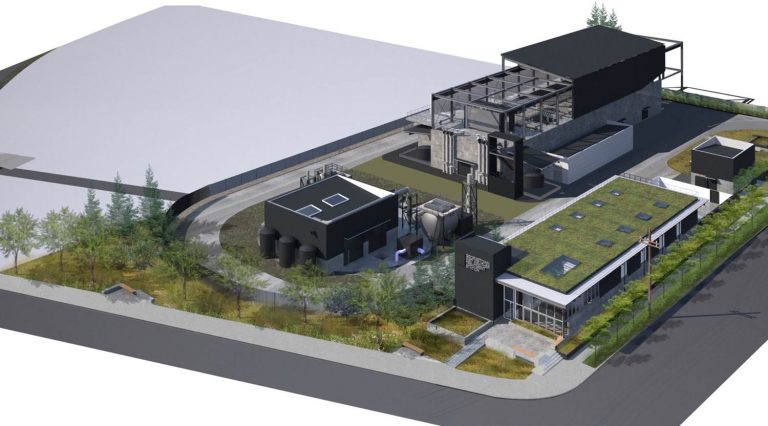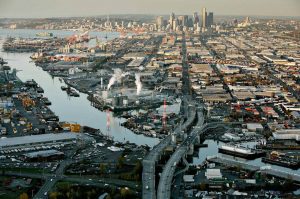WIFIA-financed King County, Wash., stormwater treatment project to protect water quality in the Duwamish River
 Construction is underway in the Georgetown neighborhood of Seattle, Wash., on a combined sewer overflow (CSO) wet weather treatment station that will treat up to 265 million L/d (70 mgd) of polluted stormwater runoff that currently can flow into the Duwamish River during severe rain events. The $262 million Georgetown Wet Weather Treatment Station — a key part of King County’s broader objective to safeguard Puget Sound — is expected to help protect the Duwamish River from stormwater pollution for the next century.
Construction is underway in the Georgetown neighborhood of Seattle, Wash., on a combined sewer overflow (CSO) wet weather treatment station that will treat up to 265 million L/d (70 mgd) of polluted stormwater runoff that currently can flow into the Duwamish River during severe rain events. The $262 million Georgetown Wet Weather Treatment Station — a key part of King County’s broader objective to safeguard Puget Sound — is expected to help protect the Duwamish River from stormwater pollution for the next century.
“This is one of the final projects that will complete King County’s efforts over four decades to control CSOs that still occur in Seattle during heavy rains,” said King County communications specialist Annie Kolb-Nelson. “In addition to providing environmental benefits, the project will also protect the Duwamish River Superfund Cleanup investment.
The new facility, which includes piping infrastructure and a new outflow structure, was one of 12 nationwide projects that qualified for low-interest financing under a new U.S Environmental Protection Agency (EPA) loan that aims to accelerate investment in critical infrastructure projects. EPA’s Water Infrastructure Finance and Innovation Act (WIFIA) program provides long-term, low-cost supplemental loans for regionally and nationally significant projects. King County’s treatment facility is eligible for $134.5 million in WIFIA funding, which could potentially save sewer ratepayers up to $34 million.

The Georgetown Wet Weather Treatment Station will protect the Duwamish River from stormwater pollution for the next century. (Photo courtesy of King County)
During the design phase, King County’s Wastewater Treatment Division conducted extensive community outreach to ensure the treatment station reflects the local character. “Community input played a big role in the design process and guided the engineering and architecture of the project,” Kolb-Nelson said. The sustainable design includes a green roof, rain gardens, and cisterns to filter and collect stormwater. Additionally, the facility will include a space for school programs and environmental education.
The project also places a high priority on equity and social justice and includes planning elements to benefit the local community — one that is ethnically diverse and traditionally underserved, according to Kolb-Nelson. “The construction phase will generate family-wage jobs in the community and provide job training and apprenticeships for residents,” she said. “King County will also add tree canopy and green space to improve air quality in the Georgetown neighborhood, which has one of the highest asthma rates in Seattle.”
